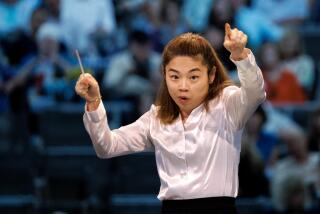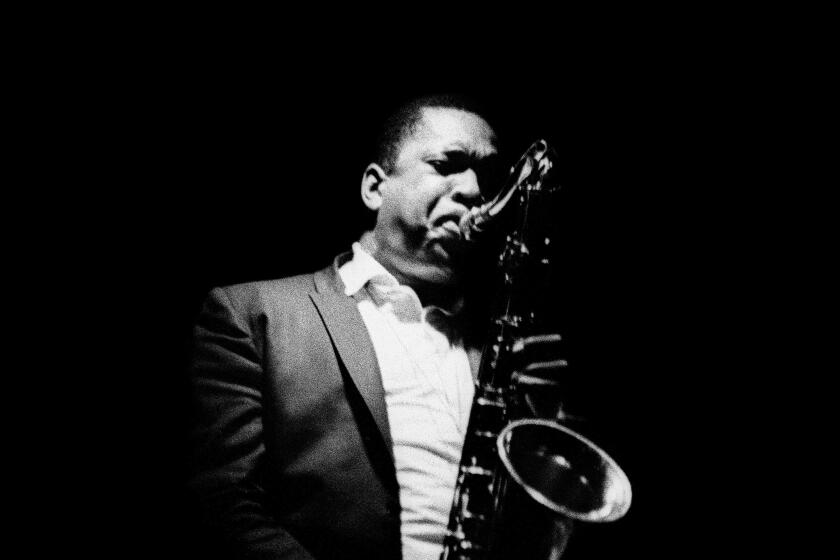MUSIC REVIEW : Hogwood in a Modern View of Bach, Vivaldi at the Bowl
- Share via
So, after all these years of study and scholarship, argument and controversy, we’re back to sewing-machine Bach. What a dubious accomplishment we moderns have wrought.
Prominent in this historic struggle has been Christopher Hogwood, who led the Los Angeles Chamber Orchestra this week in two programs devoted to Bach and Vivaldi at Hollywood Bowl.
After a frail rendition of the national anthem that elicited subdued singing from the 6,827 in attendance Wednesday, Hogwood conducted “Brandenburgs” Nos. 1, 3 and 5 and Vivaldi’s “Spring,” “Summer” and “La Caccia” (The Hunt) concertos, all from Opus 8. (The remaining “Brandenburgs” and “Seasons,” plus another Opus 8 concerto, were scheduled for Thursday.)
Hogwood’s Bach and Vivaldi tended to be fast, crisp, clean and completely devoid of affect, character, emotion, call it what you want.
Under his direction, all the instruments seemed to aspire to be harpsichords--even and steady in dynamic, detached in phrasing and achieving variety only through changes in articulation.
Hogwood did, however, permit diminuendos, especially at the end of movements. He also allowed wholesale shifts in the level of dynamic, particularly in echo passages, and, horror of modern horrors, slowing down before cadenzas. None of this departure from strict purism helped much.
Stanley Ritchie was the fluent violin soloist in the Vivaldi concertos, although “La Caccia” proved a hunt that stayed in one place. Patricia Mabee, harpsichord; Rachel Robinson, violin, and David Shostac, flute, were masterly soloists in the Fifth “Brandenburg.”
Except for some minor intonation problems, caused perhaps by the cool evening air, the orchestra played with alert precision. Mabee and cellist Rowena Hammill provided splendid continuo support.
The amplification proved variable. It allowed exceptionally clear textures, bringing horns, oboes and harpsichord into balance. It also made the electric chamber organ (ah, did Vivaldi score for a chamber organ?) a prominent drone in “Spring” and added surround-sound after-echoes from the back of the Bowl.
More to Read
The biggest entertainment stories
Get our big stories about Hollywood, film, television, music, arts, culture and more right in your inbox as soon as they publish.
You may occasionally receive promotional content from the Los Angeles Times.










